Wonder and Magic in Education
High Tech High’s Educational Leadership Academy (ELA)
This school year I have the pleasure of being enrolled with three Magen David Yeshivah colleagues, Rabbi Michael Bitton, Mrs. Sabrina Maleh, and Mrs. Esther Tokayer, in High Tech High’s Educational Leadership Academy (I’m grateful to Joshua Venture Group, whose funding is enabling this opportunity). HTH’s ELA program consists of three onsite residencies, regular check-ins with a critical friend — a HTH educator assigned to each school team — webinars, and a Google+ community that allows our school team to receive readings and resources and connect with the other school teams in our yearlong journey.
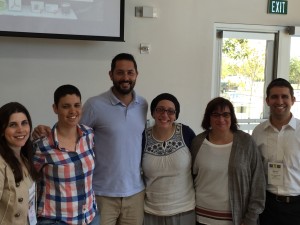
The Magen David team with our critical friend Marc Shulman and Talia, a graduate student who’s at the schools for the year. She also joined us to project tune us!
I’ve just returned from the first of the onsite visits, inspired, transformed, humbled, amazed, and thoughtful.
As I posted on FB as I was on my way to the onsite residency, I watched a video about HTH five years ago and was immediately impressed with the school. OK, those who know me know I use hyperbolic language when discussing HTH, so I’ll confess and say offline, I told colleagues I heard angels sing. So that’s, you know, being inspired on a pretty deep level. I’d visited HTH twice before the residency, so one of the things I was looking for on this trip was the dirt. I mean, what’s the place really like behind the scenes? Are the schools — or the High Tech village, as it’s now called, since the original HTH campus is now a complex of about five schools, K-12, and a graduate school building — really educational Disneyland, or just a really good-looking set on the Universal Studios tour?
Well, the workshops were immediately engaging, full of thoughtful, meaningful protocols we could use in an array of settings, and the educators we spoke to continued to impress, even while talking freely and openly about the challenges they faced with kids. They were the first to say that the High Tech schools have the same problems other institutions have — kids are kids and the things they do, feel, and say require the same careful responses they do in any setting. But we also continued to see exceptional work everywhere we went, and our student tour guide, Diana, was charming and articulate, as she took us around the schools and shared with us her experiences as a student, her parents’ response to the constructivist educational approach of the school, and her own take on the school’s culture.
The High Tech Philosophy
Cutting across all the interactions we had with the various stakeholders in the school — from Larry Rosenstock, the schools’ CEO and Founding Principal to Laura McBain, who facilitated the residency and runs PD for the schools, our critical friends, the educators in the schools themselves, and, of course, the students — was a shared purpose, what the school calls a shared intellectual mission. This consists of the school’s two main pillars, deep learning and beautiful work, which rest on a foundation of equity. Those three identifiers pop up differently in variety of ways throughout the school.

The school’s strong sense of mission can be seen everywhere: here, it’s in a multi-disciplinary project, asking students to consider the role of philanthropy from literal and figurative lenses: philosophy, journalism, a camera . . .
How does the shared purpose manifest itself? A few examples:
1) Protocols and norms were a constant in the workshops. Having a clear set of rules to follow made it simple to establish an atmosphere of respect. In fact, since the norms made it easy for us to honor and listen to each other, we could quickly get to an analysis of what deep learning means. Deep learning, in turn, leads to beautiful work, since the thoughtfulness required for deep learning leads one to excel and produce high-quality products. So, while the schools’ three key characteristics might not, on the surface, seem easy to define or even connect to one another, it didn’t take long to do just that.
2) At all the workshops, the High Tech educators participated in the exercises as if it were their first time doing so. They were as involved in the activities as we participants were and as respectful of the protocols. As a result, we not only had norms we were engaged in and also reading about and viewing in student work, we had living models to copy from. Again, our ability to learn deepened as a result of the presence of our critical friends, but we also saw in them the atmosphere of respect the school has cultivated and the way it goes about instilling its pedagogy.
3) The students: at the end of the day, we’re in education because we love kids. Scott Swaaley, an educator from the schools who’s featured in the film, Most Likely to Succeed, had dinner with me and my Magen David colleagues one evening. Scott had awesome insights into HTH and education in general. One of them: “We need to make education a rational career choice for people.” Amen. Right now we crazy people do this because we really love kids. And one of them on our student tour showed us how the schools’ philosophy was working:
When asked if she would feel comfortable talking about her IEP, she said, waving her hand, “Oh, sure. I have no problem talking about that.” That comes from a place where she knows she is seen as someone equal to any of her peers. I’ve seen many kids beaten down by a system that tracks them, sometimes in excruciatingly stratifying ways. True fact: I’ve heard students refer to their math class as “dumb Honors math,” since there was a low and high Honors class in their school. The High Tech Schools, because of their commitment to equity, don’t track; instead, all classes are differentiated, and any student can opt to complete Honors work in any course. Larry told us about 70% choose to do so, because they see their peers doing Honors work and say, “Hey, I can do that.” Larry has a strong belief that we don’t leverage peer pressure in a positive enough way at all.
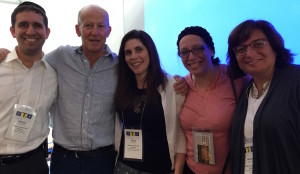
The Magen David team with Larry Rosenstock; he led a two-hour workshop on one of the days of the residency to share his wisdom and insights
When asked about homework, the same student said the school doesn’t give her much, saying her teachers are mindful that she has interests she might want to pursue outside of class. When we asked her about them, she said since she’s a junior, she takes a free SAT class, attends lectures at a university, so she can get Honors status in her Biology class, and goes to soccer practice. She also says she has free time when she just wants time to herself.
Again, this schedule speaks to a sense of respect for the whole person, for the fact that as learners, we need to be in school doing work that is meaningful and relevant, but to be out of school choosing activities we want to pursue — some that deepen learning or get us ready for college or both, and some that are ways we nourish ourselves, physically, mentally, or spiritually. I think deep learning can occur better in school when we allow ourselves time to adequately refresh. (I also wonder what the workplaces of the future will look like when this philosophy spreads and consequently creates a new type of mental attitude. The overloaded schedules our kids have are simply a mirror of the adult world’s generally overtaxed work life.)
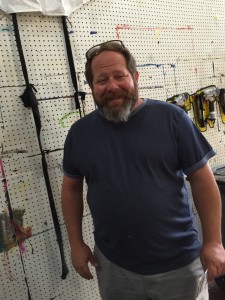
One of my first stops on any trip to High Tech High is the classroom of Jeff Robin, art teacher extraordinaire
Wonder and Magic
As you can tell, I’ve returned convinced that the High Tech Village is educational Disneyland, as I thought it was when I watched the edutopia video so many years ago. I’m amazed that the video was able to capture something deep and true in 5 minutes, a reality that has borne up over three visits to the schools and multiple encounters with myriad educators and students in them. Now I understand better the principles by which the schools operate and look forward to delving even deeper into them, but there’s something more . . . .
One of the similarities I see between Disneyland and the High Tech schools is that they both aim to produce a sense of wonder and magic. Larry talks about that sense of wonder in Most Likely to Succeed, when he describes the students on the schools’ exhibition nights, events when parents and the local community come to view student work. Larry strongly believes we all have a need to create something and share it with the world, and we all want to experience the wonder, as Larry says, that the student has when realizing, “I made this and someone is coming to see it.”
As for the magic: it was a word that popped up when our critical friend Marc Shulman used it when he was working with our team and again when we selected quotations that had meaning for us when contemplating equity in our schools:
“I’m here to tell you that magic can be taught . . . . You teach it by allowing people to go into those spaces where the magic is happening.” — Chris Emden
It’s happening at the High Tech Schools. It’s happening.
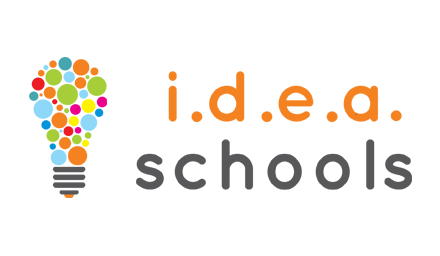
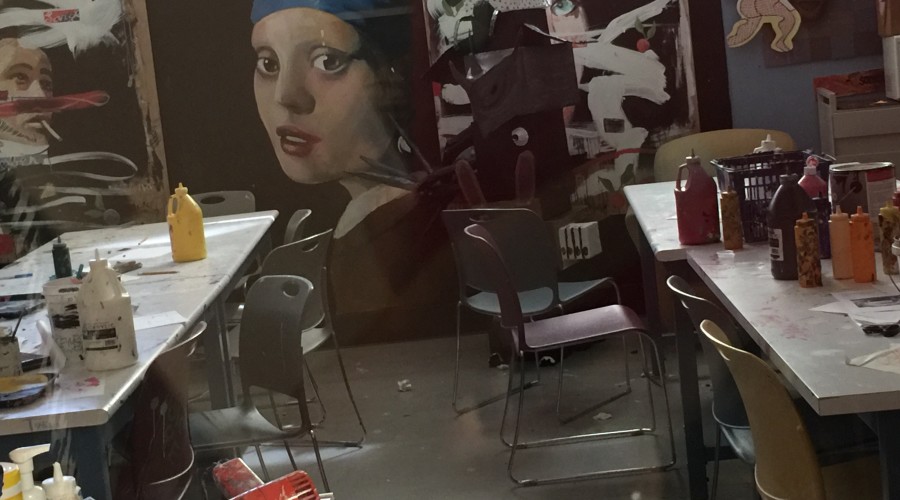
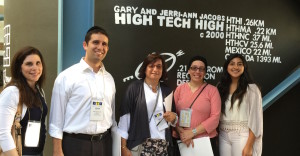
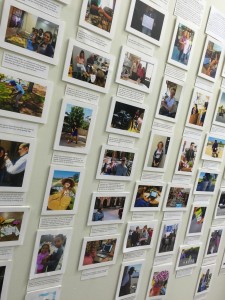

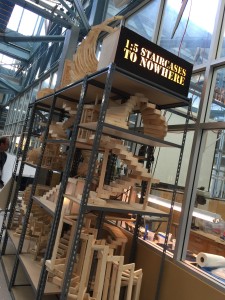
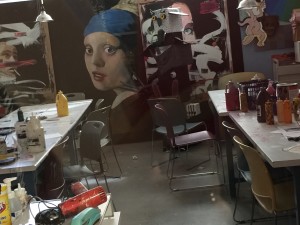
Recent Comments